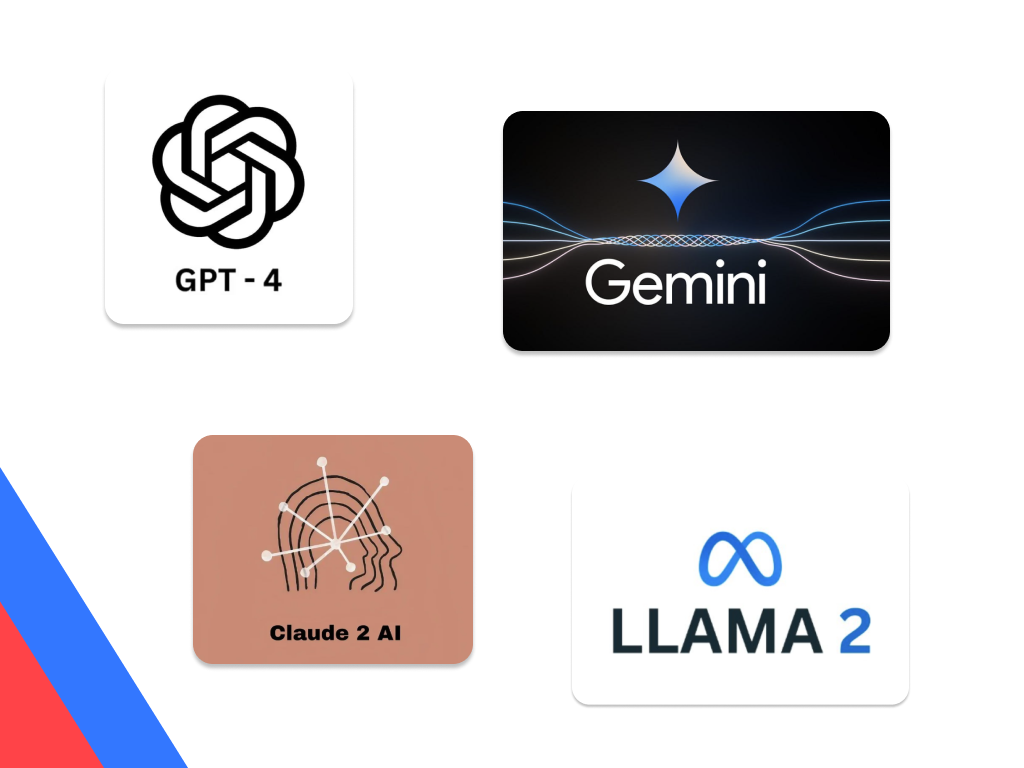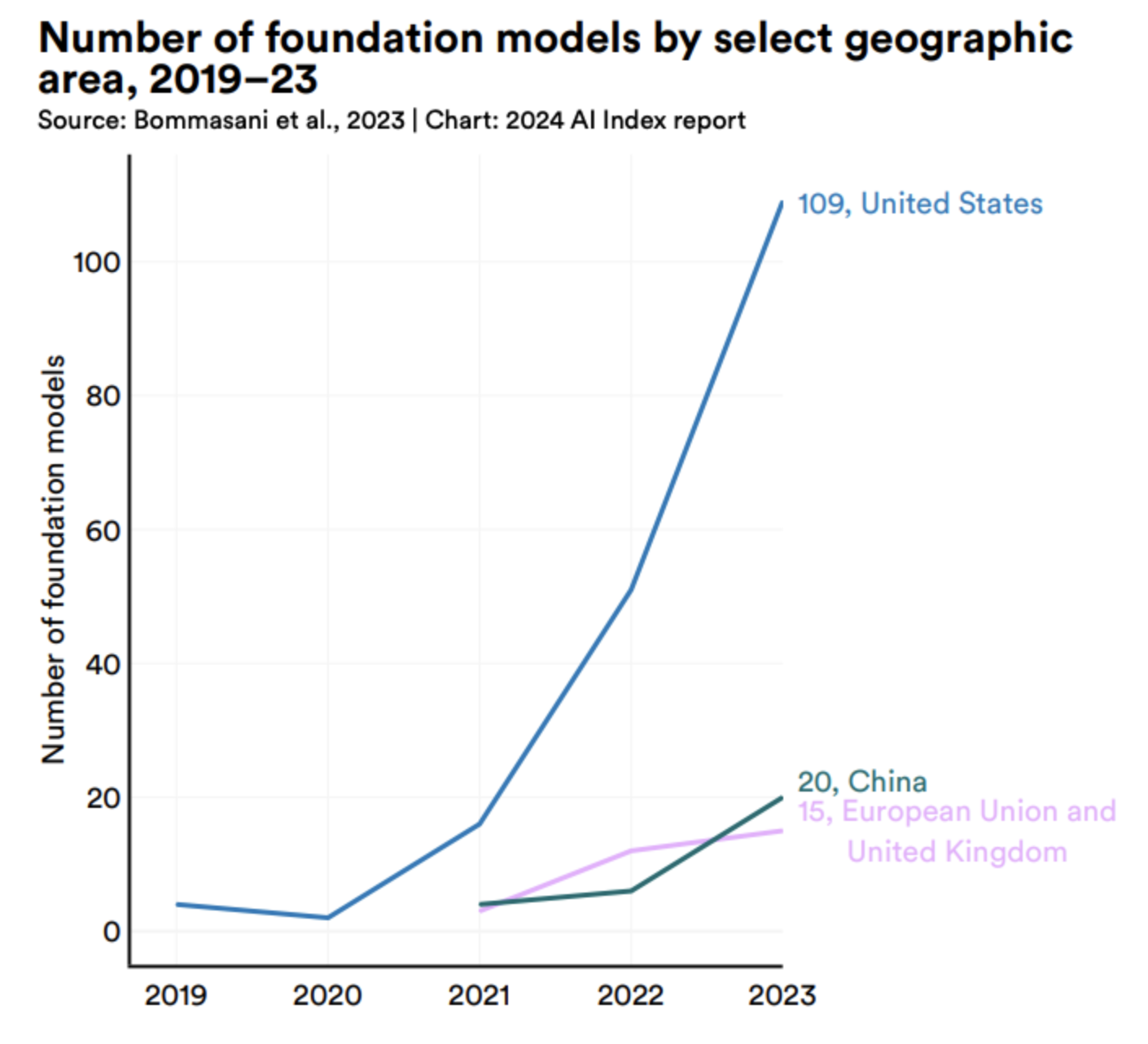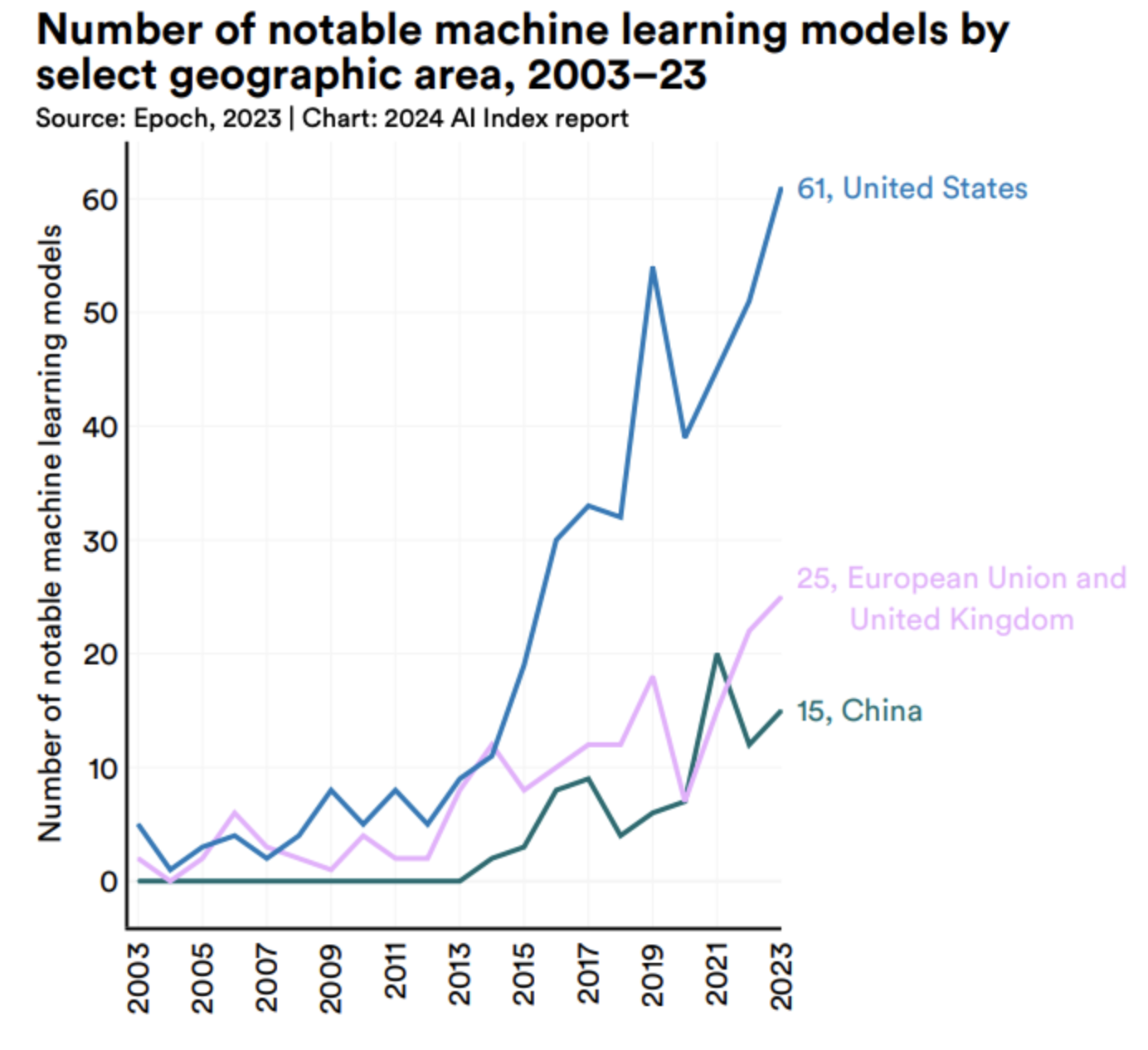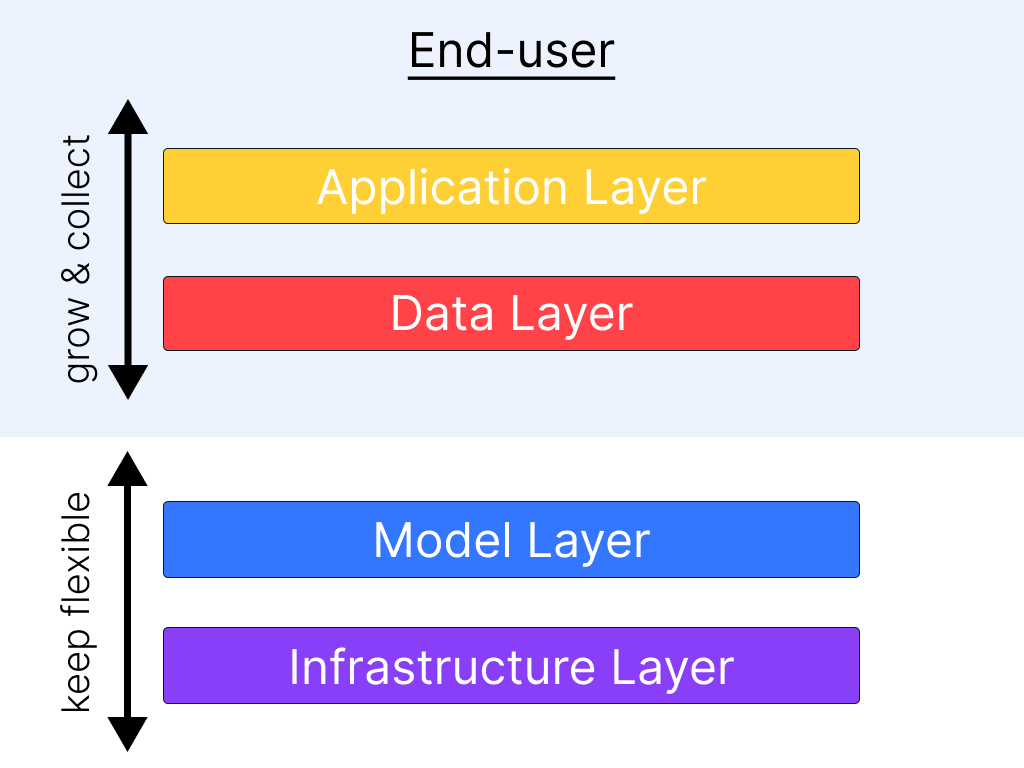
Bring your own AI model
Staying open to changing, aggregating or improving underlying foundation models.
05/2024
After the world-wide break-through for AI, developers have started a race to build the best large language models, constantly trying to outperform each other. At the same time ordinary businesses want to get started with their AI efforts and need to decide on appropriate AI models to use for their efforts. This article attempts to give a rough guideline to what businesses should consider.
When deciding for an AI model (provider) businesses can select from a variety of options: the most powerful model (i.e. OpenAI with GPT4 – at least at the time of writing this article), a provider whose other infrastructure and tools the business already uses (i.e. Google with Gemini and Google Cloud products), a transparent and controllable open-source model (i.e. Llama3 from Meta), or a provider that specializes in their specific industry or language (i.e. Aleph Alpha for the German market).
However, with the high pace of the AI market, also comes high uncertainty for businesses, which providers and model concepts will prevail and which will not. The two graphics by the AI Index report 2024 indicate this trend through the number of released AI models. For smaller companies without extensive IT or AI expertise, this choice can be particularly challenging.
That’s why at ValueFlow, we recommend a specific approach: opting for an AI studio that allows businesses to bring their own AI model. This flexibility ensures companies can adapt as the technology evolves, without being locked into a single provider or platform.
What it means to “bring your own AI model”:
“Bringing your own AI model” essentially means setting up a system that allows your business to easily switch between different AI models as needed. First, you might create accounts with one or several foundational AI providers, such as OpenAI, Google or Aleph Alpha. These platforms offer various AI models that you can choose from – you only need one API key per provider, also if you would like to use multiple models from one provider.
Next, you would use an AI platform or studio, which lets you integrate these different models seamlessly into your business operations.
Take a look at the graphics on AI layers: The goal here is to remain adaptable at the model and infrastructure levels while building your processes / workflows at the application layer. Businesses also want to grow their data layer, collecting data from relevant websites or APIs. This approach ensures that regardless of which AI model you choose, the business can effectively be augmented independently of which model will be best suited in 2, 5 or 10 years from now.
Advantages of model provider flexibility
The flexibility to switch between different AI model providers offers several key advantages to businesses. Firstly, it eliminates the ‘lock-in effect’ where you’re tied to a single provider, allowing you to use various models for different tasks without any long-term commitment. This adaptability enables you to continuously optimize for cost efficiency or performance enhancements based on your current needs.
Furthermore, different models may be better suited for specific industries due to unique vocabulary and domain knowledge requirements. You can also enhance security by choosing between open-source models, which are transparent and modifiable, and closed-source models, which may offer proprietary advantages.
Another significant benefit is the ability to combine multiple models to boost overall performance. This practice, often called creating ‘model ensembles’, can provide more accurate and reliable results. For example, one model might excel at understanding financial language while another is better at processing medical terminology. Together, they can cover a broader range of topics more effectively.
Additionally, this strategy minimizes risks associated with AI vulnerabilities, such as hacking. If a security issue arises with one model, you can swiftly switch to another, safeguarding your operations. You also retain control over where your data is hosted and give your data scientists the freedom to tweak and refine models as needed.
Ultimately, adopting a flexible approach to AI integration ensures that the technology aligns with your company’s specific needs, fostering a better fit between AI capabilities and business objectives. By establishing a company-wide AI studio, you create an environment where tasks are consistently evaluated and data is systematically collected, ensuring readiness to adapt to rapid AI advancements and maintain a competitive edge.
Future outlook of AI model providers
Looking ahead, we expect the AI landscape to evolve significantly. We believe that a small number of models will dominate as many other providers potentially exit the market due to financial constraints. While there’s a push towards general intelligence by the frontier AI providers, specialized models for specific industries or tasks will likely remain in demand due to their tailored performance.
Both open-source and proprietary models can be expected to coexist, catering to different user preferences for control and convenience. The cost of using these AI models will fall as significant investments are currently made in computing resources, making AI models more accessible and more of a commodity.
And finally: Despite technological advances, the need for human oversight will persist. Human expertise will be essential for evaluating AI outputs, refining data, and optimizing systems to ensure that AI implementations align with real-world needs and values.
May 2024 | ValueFlow team
Reach out with comments or suggestions:
comment@valueflow.ai



